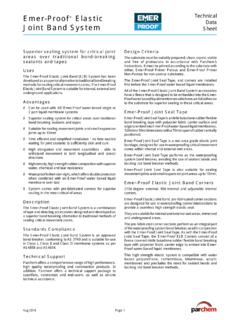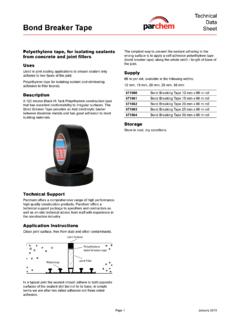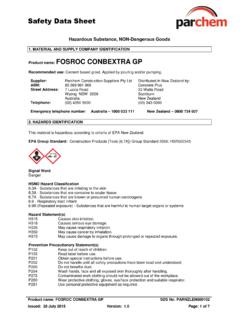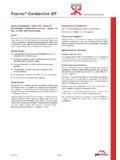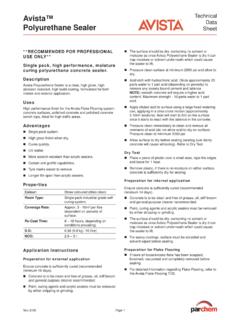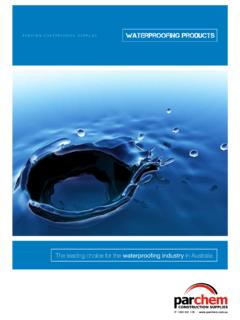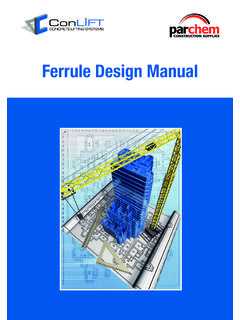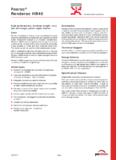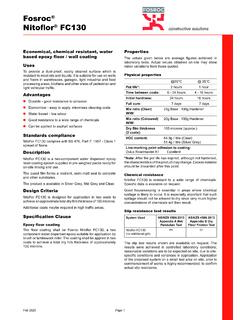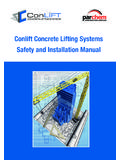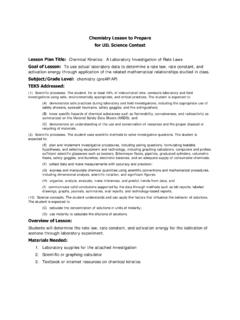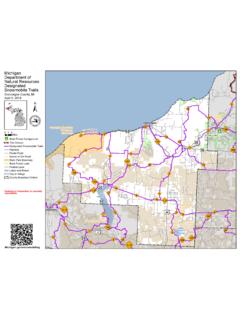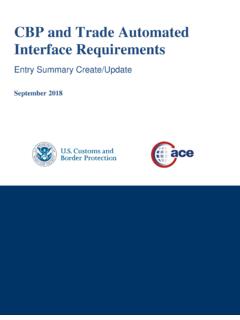Transcription of Jointflex - Parchem
1 Technical Data SheetPage 1 March 2008 JointflexClosed cell polyethylene joint fillerUsesJointflex is a closed-cell polyethylene joint filler for use as an expansion joint filler in brick and blockwork, isolation joints and hinge joints where a readily compressible low load transfer joint filler is is also used as back-up strips for elastomeric sealants placed in joints of concrete floors subject to foot traffic and light wheel joints subject to heavy loads or joints in water retaining structures Stiffjoint should be used (see separate Technical Data Sheet). Back-up/bond breaker strip to support sealants Bridge decks, abutments, pier hinge joints Brick and blockwork in building superstructuresAdvantages Readily compressible Low load transfer Easily cut on-site Excellent recovery after compression Non-absorbent Rot proof CFC freeDescriptionJointflex is a flexible, readily compressible, closed-cell polyethylene joint filler supplied in sheet form and in rolls of rectangular sections.
2 Jointflex is available in a range of widths and thicknesses to suit common applications and can be pre-slit to assist in forming a slot to accept joint sealants. Jointflex can also be supplied with a self adhesive CriteriaTrafficked surface expansion joint1321. Jointflex2. Suitable joint sealant 3. Concrete slabExternal walling and claddingJointflex is used as a readily compressible, low load transfer joint filler in joints surrounding brick infill panel walling. It is also used as a gap filler, back-up strip and bond breaker to fill open joints in panel construction to provide support for joint sealants.
3 23 or 4512 Compression joint in brick infill panel1. Jointflex2. Suitable joint sealant3. Blockwork4. Brick panel external 5. Concrete beamPropertiesForm:Cross linked, compressible, closed cell foam sheetColour:GreyWeathering:Very good weather resistanceRecovery: Greater than 90%Water absorption:< g/cm Effects of fire: When tested to AS1503 of flame index0 Heat evolved index0 Smoke development index (smoke given off is non-toxic) 4 Being a thermoplastic material, Jointflex will melt. It is combustible but rate of flame spread will be reduced when confined within a jointNominal density:25 kg/m Chemical resistance:Resists most common acids and chemicalsThermal conductivity:K factor WMK 0 CPage 2 Parchem Construction Supplies Pty Ltd7 Lucca Road, Wyong NSW 2259 Phone: 1300 737 80 069 961 968 Distributed in New Zealand by: Concrete Plus Ltd23 Watts Rd, Sockburn 8042 Ph: 03 343 0090 Important noticeA Safety Data Sheet (SDS) and Technical Data Sheet (TDS) are available from the Parchem website or upon request from the nearest Parchem sales office.
4 Read the SDS and TDS carefully prior to use as application or performance data may change from time to time. In emergency, contact any Poisons Information Centre (phone 13 11 26 within Australia) or a doctor for disclaimerThis Technical Data Sheet (TDS) summarises our best knowledge of the product, including how to use and apply the product based on the information available at the time. You should read this TDS carefully and consider the information in the context of how the product will be used, including in conjunction with any other product and the type of surfaces to, and the manner in which, the product will be applied.
5 Our responsibility for products sold is subject to our standard terms and conditions of sale. Parchem does not accept any liability either directly or indirectly for any losses suffered in connection with the use or application of the product whether or not in accordance with any advice, specification, recommendation or information given by InstructionsJoint sealing slotsWhen used as an expansion or isolation joint filler in brickwork, Jointflex should be positioned to provide for a surface sealing slot of the required dimensions ensuring that the sealing slot is free from mortar droppings or slurry may be fixed into position using a suitable general construction adhesive.
6 Care should be taken not to contaminate the surfaces of the sealing slot with Jointflex is used as the joint filler no additional bond breaker is as a back-up/bond breaker strip Jointflex serves both; regulate depth of sealing slot required and to ensure movement of the joint sealant is not restricted by adhesion to base of sealing There are no special storage requirements for this product, however, it should be stored in the dry and not left exposed to the elements for extended periods, especially in hot sheet thickness: 10, 12, 15, 20, 25, 30, 40 and 50 mm. Jointflex standard sheet size is m x sizes of Jointflex are available to specific is supplied in 25 metre rolls in the following sizes :10 mm thick: 50, 75, 100, 125, 150, 200, 250 and 300 mm depth Note: other widths are available to specific order.
